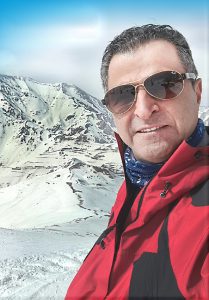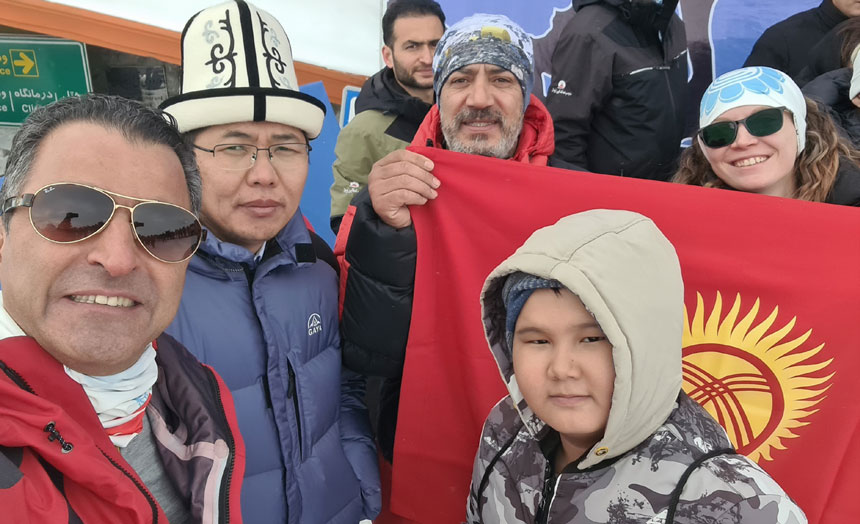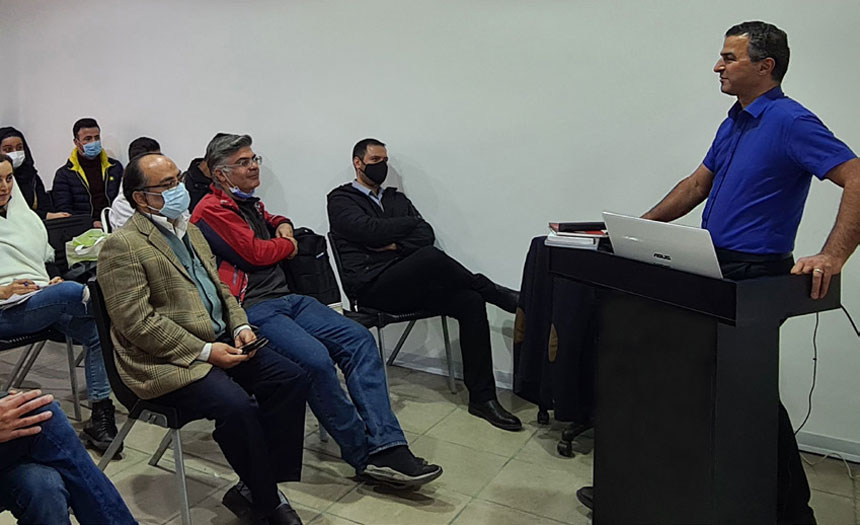By : Mana Honar Pisheh
Hamid Mosaedian was born in Tehran in 1966.
He studied biomedical engineering before graduating from
Shahid Beheshti with a medical degree in 2000.
What prompted you to pursue mountain medicine?
I joined the college mountaineering team as a student because of my fascination with mountain climbing. I was later in charge of the climbing committee before becoming a member of the public relations and the mountain medicine committees. In 2001, I accompanied the national mountaineering team as the team physician to Makalu, the fifth highest summit in the world. This was followed by further productive collaborations with the Federation of Sports Medicine.
How does Iran’s mountain medicine compare to other countries?
Our mountain medicine leads the Middle East, and we have relatively equal performance to European countries although their output may seem superior to ours as their rescue and relief and medical equipment minimizes casualties.
What are your main accomplishments in the field of mountain medicine?
I have authored 2 books and over 16 international papers and contributed to sports medicine research carried out by students and physicians. I compiled a book about proper treatment for frostbite, which would lead to amputations until recently.
I have been cooperating with IRIB Radio Salamat (Health Radio) and IRIB Varzesh (Sports Channel) as an expert contributing to scientific topics since 2001. Our collaborations with the rescue and relief organization to reduce mountain accidents and accelerate the deployment of rescue teams have been among our major achievements during the last ten years. Following the deaths of ten people in Tochal and Kolakchal mountains in 2006, the Mountaineering and Sport Climbing Committee launched an initiative to minimize fatalities. The mountaineering committee information center was established, and later extended to some other cities, lowering the death toll to zero. In addition to assessing the clothing and equipment of climbers entering the area, the information and accident prevention staff guide hikers.
What sort of training programs have there been for high altitude safety?
We offer two-year high altitude and wilderness medicine training and regularly organize mountain medicine refresher courses. First aid qualifications were made compulsory for climbing instructors to ensure proper response to accidents. Training is also offered for search and rescue missions in challenging areas like walls and some instructors have been sent overseas for technical avalanche rescue training.
Do you have any memories of some rescue and relief missions that you were involved with?
A climber’s GoPro camera accidentally recorded one of the saddest sport incidents in Dizin ski resort in which eight people died. The footage was displayed at international sports festivals in the UK and Canada, highlighting the importance of weather forecasts, safety and equipment and researching the intended route.
In another tragic accident in 2017, an avalanche claimed the lives of 9 climbers on Oshtoran kuh, one of the most technically challenging mountains in Iran where climbers have to deal with rocks and ice.
A team announced that they would be leading a large group of hikers to a peak with a leader who had previously ascended Manaslu in Nepal at the height of 8136 m. Underestimating the 3830 m summit, the leader who didn’t have an accurate route map took the hikers straight into the area where an avalanche had happened 11 years before.
What are you currently working on? What plans do you have for the future?
Public sector restrictions prompted me and my late friend Dr. Saeid Baharloo to establish a nongovernmental organization called the Mountain Medicine Association. We responded to the need for seasoned instructors in all these areas to deliver training through the private sector and we have some mountaineer physicians supporting those who require help.
At our reputable mountain medical center, we offer a full range of treatments in physiotherapy, cardiology, internal medicine, nutrition and psychology.
I compiled the mountain medicine reference book, and now I am focusing on wilderness medicine to develop safety through prevention, treatment and after incident care. We are enhancing safety development through training and starting rescue and relief teams in other fields like canyoning, ski mountaineering, and caving, where fatalities are high. We are responsible for Darbandsar resort emergency department working with skier physicians like dr. Bastampour.
What are your aspirations in the field of mountain medicine?
We are trying to further collaborations between agencies in mountain medicine and outdoor sports and facilitate attendance in international sport medicine conferences and organization of seminars. Our other goals are awareness raising and upgrading the clinic equipment so that we can deliver better service to athletes.






